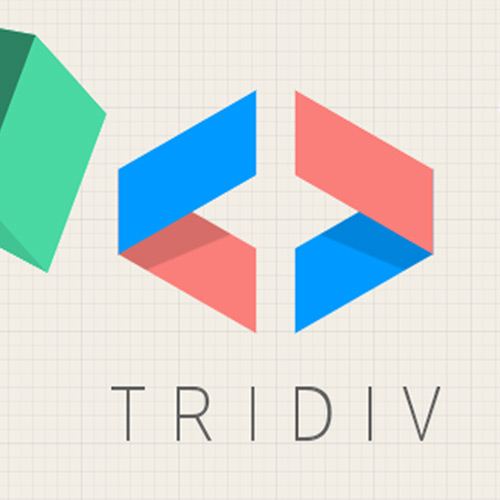Writers don’t want designers to hate us, but we ‘get it’.
Designers see us as defensive babies — that’s fair. You assume we’re only killing time until we sell our manuscript — also fair. But be nice, or we’ll name a character after you and make them a massive jerk.
We need to be comrades. When we work in unison, magic happens and projects reach a whole other level. When we work against each other, it’s a hateful experience, and the job becomes the child of a loveless marriage.
In an effort to unite designers and writers around the world, here are a few things that you should know about your wordsmith:
You have magic powers we don’t understand
Seriously. How the hell do you do anything that you do? Your skills are insane. We can’t do those things, and struggle to understand them. We control our laptops with a small trackpad at the bottom. You have a magic pen mouse thing that confuses and scares us.
Copywriters don’t know the first thing about graphic design. We have no clue how long it takes to code an image map. We might say something like ‘Maybe make that word pink,’ but we don’t actually know if that is a good idea. — one humble writer.
Bear with our ignorance. We’re coachable. If we ever ask you a stupid question, or a have a stupid idea, be patient. Try to teach us, so you only have to have this conversation once.
And please don’t look down on the little sketches we make when we’re trying to show you what we’re imagining. We know they suck. Just wave your magic pen mouse and make it better.
We’re sorry we leave at 5pm while you’re still working
We truly are sorry. We wish we could help you. But as outlined above, we can’t do your job. Letting us help you with design is like letting a 5-year-old help you paint the house. You’d have to work very hard to undo our damage.
Also, staying after 5pm really cuts into naptime. And then there’s the crankiness.
Kidding aside, your work is often more time consuming. It’s estimated that a designer can design a website in 20 hours, if they work uninterrupted (try to imagine not being interrupted) and everything runs perfectly. If writers had the same circumstances, our work would likely be done in under 10. So you’re almost always going to have more on your plate.
We would love to help, any way we can. When you’re slammed on a big project, let us know if there is any way we can lighten your load. Feel free to give us any grunt work you think we can handle.
We share a lot of frustrations (mainly the client)
Writers and designers can often bond over the fact that people try to ruin our work.
We can imagine how frustrating it is when a client suggests that you wedge a logo into your work. And you can imagine how frustrating it is when they ask us to add buzzwords like “Omni-channel” to ours. We’re both given the always-vague feedback of, “Make it pop”. We’re also both asked to “whip something together” by people who have no idea how long our work should take.
We don’t love that your work usually comes first
There’s a polarization of opinions about what’s more important: the design or the copy? Should the copy be written to fit the design, or vice versa? Both sides have merit, but design-first typically wins out in most agencies.
You are also most likely getting paid more than us, with more opportunity for freelance. This may lead to a bit of professional jealously, even though we fully acknowledge the earning potential of your magic powers.
Again, stay patient with us. Let us pout now and then. We’ll get over it.
Get your writer involved in the creative process, as early as possible. Let them in, even if they’re not supposed to start working on the copy just yet. Show them what you’re working on, and where you want to go. This gets our juices going early, helping us turn out better copy to go with your amazing design.
People will try to turn us against each other
Account managers or sales staff can be sneaky, in an agency setting. They may get you to try to convince us to reel in a deadline, or vice versa. This can’t happen.
It may be subtle. It could be an email that says “Hey, Jan said the grape juice ad will take 3 days to design. Can we speed this up?” Or they may outright ask us to convince the other to re-shift our priorities. No matter what form it takes, it’s a simple case of asking Dad when Mom says, “No”.
We’re a team. We need to form a unified front against these attacks. We need to always extend the professional courtesy of respecting the each other’s deadlines and timeframes.
we need to have each other’s backs when people…ask for too much
This isn’t to say we won’t re-arrange deadlines to help you. That’s just a case of the artists sticking together and helping each other out. But we need to have each other’s backs when people outside of creative ask for too much.
It sounds cliquish, but this is how great work gets done.
We want to work with you again in another life
We won’t be together forever, but we want to be together again.
If one of us leaves the company, we need to stay in touch — on e-mail, Facebook, LinkedIn or whatever. Writers love having a network of talented creative people. And we want to refer you.
This means we want to drop your name if a freelance client needs a designer. We would also love to help you get your next job. Of course, we also want you to return the favor. Hopefully we have impressed you enough to keep our name in the front of your mind.
It’s important that we stay in touch after our paths go different ways. So let’s stay on each other’s radar.
This is far from a complete list. Writers need a lot of understanding. But do your best to learn and understand our creative intricacies and we will do our best to bring out the best in your work.
Source

































